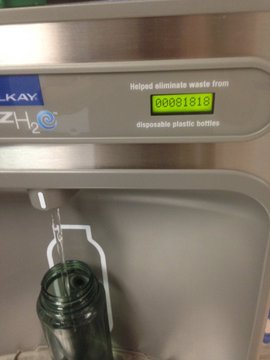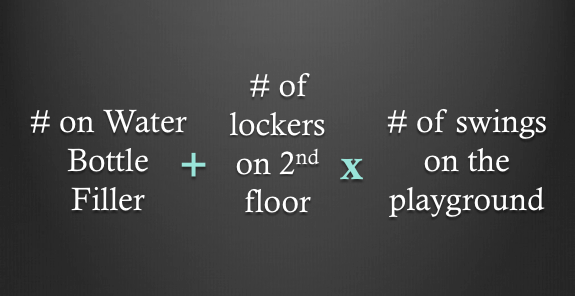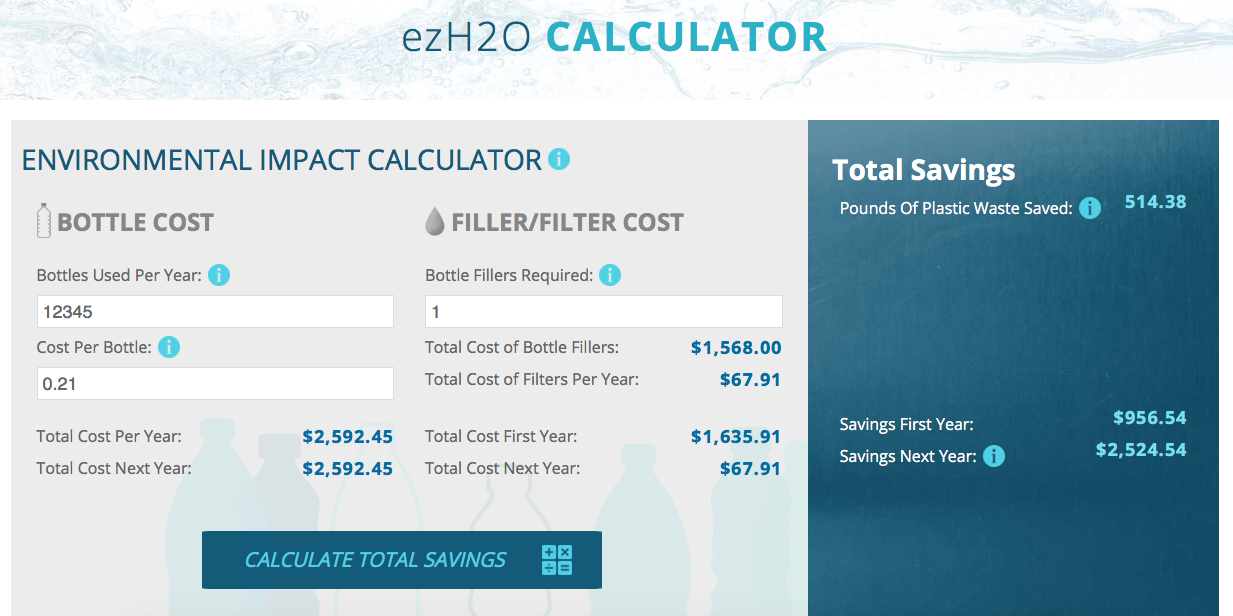Did you ever say to yourself “Who wrote this story problem? It’s so unrealistic.”

I’ve done that countless times. But instead of just continuing to complain about “fake story problems” I decided to do something about it. I started looking for real numbers, real data, and real situations my students could analyze and engage with.
And one of the easiest places to find real data: the Water Bottle Filling Station in our school.
We have Elkay ezH2O water bottle fillers throughout our schools, and if you don’t have them in your school, maybe you’ve seen them at airports or athletic facilities. That’s because they’re simple and they put cleaner, healthier water within reach of everyone.
So, what makes them a great source of data? Because they have a display that counts the number of water bottles filled. And once you start thinking of it as a source of data, the types of questions and projects you can have your students do with them is as limitless as the supply of water.
Here’s some ideas to start:
1. Even or Odd: Especially if you have younger students, show them a number on the display (either a picture you took earlier or as you walk past the water fountain) and ask them “Is this number even or odd?” You can even use this for other types of numbers you’re learning (like multiples of 5) or you can practice place value by asking “what digit is in the thousands place?” like this activity by Wendy Turner…
2. Special Numbers: There’s all sorts of “special” numbers you can get your kids to notice…Binary numbers (numbers that only contain 1’s and 0’s, like what computers use), Palindrome numbers (numbers that are the same forwards and backwards), Symmetrical numbers (numbers that are the same right side up or upside down), or countless other types of numbers. Just get your kids looking for them, or ask them “When will the next palindrome number occur?” Once they start noticing these numbers, they’ll want to learn about other types of special numbers.
3. Calculating with the numbers: Have you ever tried teaching kids that have too much energy? They wiggle, squirm, and their “motor” seems to be running? In fact, every kid needs a break to get up and move around. Especially in math class. So here’s a way to get kids moving while practicing some math skills (and definitely adapt to whatever concept you’re teaching in class):
4. Trends & Graphing: This idea is my favorite (partly because it was the first one I tried & it fits so well for my math standards). Have your students check the number on the water bottle filler every hour, or every day, for a period of days or weeks. Each time they get the number, have them record it on paper or a spreadsheet, and add it to a graph. When you’ve gotten enough data, have kids calculate things like “water bottles per day” or “water bottles per hour.” You can even have kids add a trend line to the graph and calculate an equation (best fit or regression, depending on how deep you want to go). The best part is getting kids to think about the data. Ask questions like “what times of day see the most use” or “is this a constant pattern” or “when will we get to 10,000 bottles saved” or whatever other questions might get your kids thinking. But if you do have them make predictions, write them down and see who “wins.” Kids love a little competition…maybe you can even have a water bottle for the winner!
5. Sustainability: It’s not enough to help kids see how many bottles are “saved” from the trash. We have to help kids realize that there are still too many bottles being wasted. Start a recycling bin in your school. Help kids repurpose water bottles into something else (I’ve had kids cut them and turn them into pots for planting seeds…they’re perfect for watching seeds sprout and roots grow because of the clear walls). Elkay even has an “Environmental Impact Calculator” on its website where kids can enter values and see the impact they’re making by reusing their water bottles. 
Never be afraid to say “this story problem is irrelevant to my students.” And always, ALWAYS do your best to use the things around you to make STEM relevant.
(And if you need help getting an Elkay water bottle filler for your school, check with local health or community organizations and see if they’re willing to fund a grant. It’s healthy and it’s great STEM learning…the best of both worlds!)
